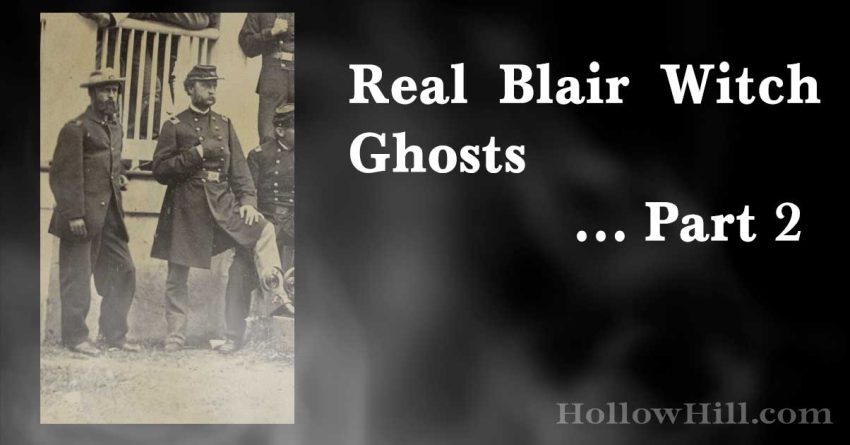First read The Real ‘Blair Witch’ Ghosts – part one Any site that’s witnessed Battles Suffering, and Graves where the dead were not allowed to rest… It may be haunted. Where the “Blair Witch Project” was filmed has all of those from Civil War times. By 1862, wounded and dying Civil War soldiers in this…
Category: Haunted Places
Case studies and ghost hunting tips for specific haunted locations.
Hollis, NH – Weird Things You’ll See at Blood Cemetery
When you first see Blood Cemetery, it may seem like a quaint New England burial site. Spend a little time there, and you’ll realize it’s downright eerie… even in broad daylight. Weird things to look for, at Hollis’ Blood Cemetery When you visit Blood Cemetery (aka Pine Hill Road Cemetery, Hollis, NH), watch for these…
Burkittsville, MD – Real ‘Blair Witch’ Ghosts – Pt. 1
By now, most people know what’s fact and fiction in the 1999 movie, The Blair Witch Project. The Blair Witch.. didn’t impress me. Here’s what did. Frankly, as an actual ghost hunter, the movie didn’t impress me. Sure, The Blair Witch Project was stylish in its own way, but a lot of it didn’t make…
Hollis, NH – Blood Cemetery’s Small Grey Ghost (A True Story)
Despite many years of ghost hunting, I still enjoy visiting Blood Cemetery (aka Pine Hill Cemetery) in Hollis, NH. It’s an isolated spot with more than its share of ghost stories, and I like it there. Well, I used to like it there… Here’s a true ghost story from Blood Cemetery The evening before Halloween…
Ghostly Mischief and a Camera at Halloween (True Story)
If you’re looking for ghostly mischief, the best night for that might be Halloween. However, in the northeast U.S., Halloween can be sultry or freezing cold. This year (1999), the weather turned unusually warm. Halloween night was perfect for ghost hunting. After dropping my son at a church youth social, I decided to return…
Witch’s Grave in York, Maine – Investigation Report
At left: The haunted “Witch’s Grave” of York, Maine / Mary Nasson (1745 – 1774) Investigation report – “Witch’s Grave,” York, Maine, USA On 17 Oct 1999, I investigated the “witch’s grave” in the Old Burying Yard on Rte. 1a in York Harbor, Maine. It’s a small cemetery on the side of the road nearest…






